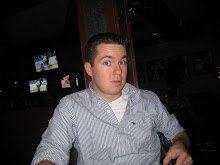photo: Brittany Haughton
 Sports synergies are not at all uncommon, whereby two activities are combined to form a completely new sport altogether.
Sports synergies are not at all uncommon, whereby two activities are combined to form a completely new sport altogether. Frisbee golf comes to mind, as does the ever-popular phys-ed pastime from grade school: soccer baseball.
And, in Guelph, another sports synergy has captured the interest of many students: underwater hockey.
Underwater hockey is not new. It was invented in England in 1954, as a recreational means of developing the breathing capacity of divers. Teams of six players are equipped with masks, snorkels, flippers, specially-crafted foot-long sticks – often made of plastic – and a lead puck, weighing nearly one kilogram, allowing it to travel along the bottom of a swimming pool.
Three-metre troughs – that serve as nets – are placed at opposite ends of the pool, with the objective of scoring goals. There are no goalies and ‘shooting’ the puck is done with a flick of the wrist, a technique that also allows the puck to be raised off the bottom of the pool.
Brittany Haughton is the president of the Guelph Underwater Hockey club and has been dedicated to the sport for the four years of her university career.
The Guelph team, which has existed since the early 1980s and was recently featured on the Discovery Channel’s Daily Planet program, is primarily developmental, allowing first-timers an opportunity to try out this innovative sport, while providing opportunities to play in larger tournaments.
“The biggest limitation when you first start playing is holding your breath,” said Haughton, who estimated her average time under water to be between 30 and 40 seconds. “From personal experience and based on what others have told me, it takes about a month [of playing] to get your breath hold up to where you can dive to the bottom of a pool, do something useful with the puck and then go back up to breathe.”
Timing your breathing is a huge factor in underwater hockey, knowing when to dive down and anticipate the play, and when is a safe opportunity to go up for air. Substitutions occur throughout the game, with team sizes often varying between 10 and 15 members.
The game is played in pools that vary in depth and design; however, the Gold Pool at the W.F. Mitchell Athletic Centre on campus was constructed with underwater hockey in mind: seven feet deep in all locations, with 90-degree angled corners at the edges and large glossy tiles on the bottom, allowing for easier puck movement.
The trademark event of each year is the Annual College Royal Tournament, a 51-game series that was played in the Gold Pool last weekend. Teams from all over North America came to Guelph for the College Royal tournament, including clubs from Michigan, Georgia and Illinois, in addition to other Canadian clubs from the likes of Hamilton, Peterborough, Calgary and Montreal, where the skill level is particularly high.
The club plays twice per week, on Monday and Thursday nights from 10:00 - 11:00 p.m. Participants are given a free initial tryout to decide whether or not this catchy and intriguing sport peaks their interest and helps channel their inner dolphin.





No comments:
Post a Comment